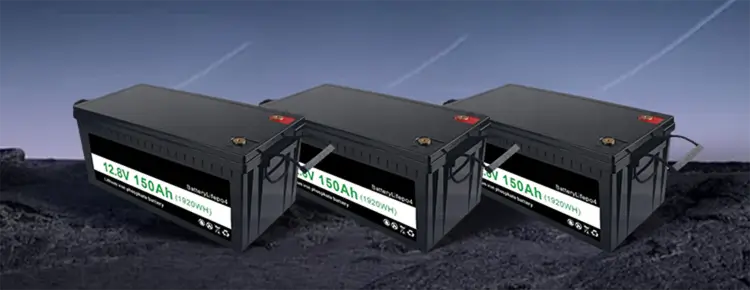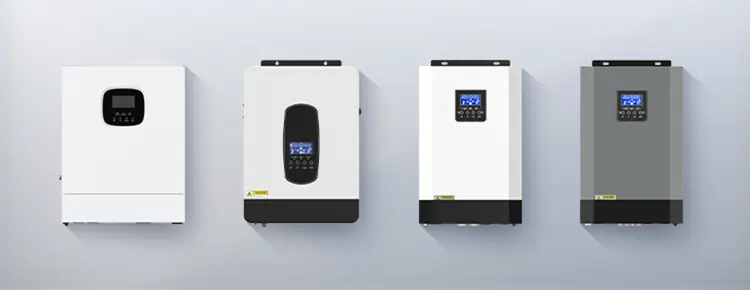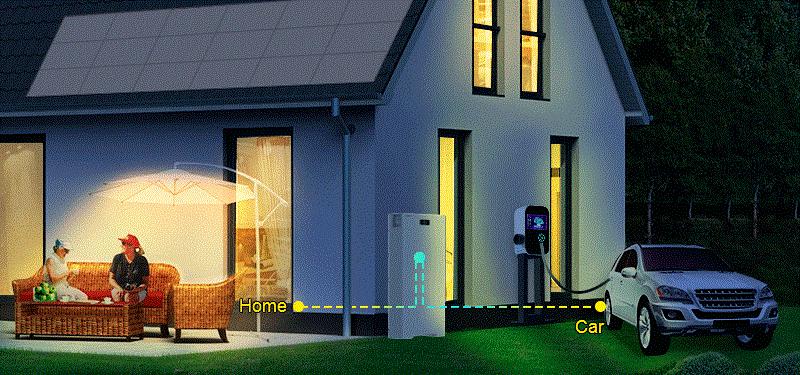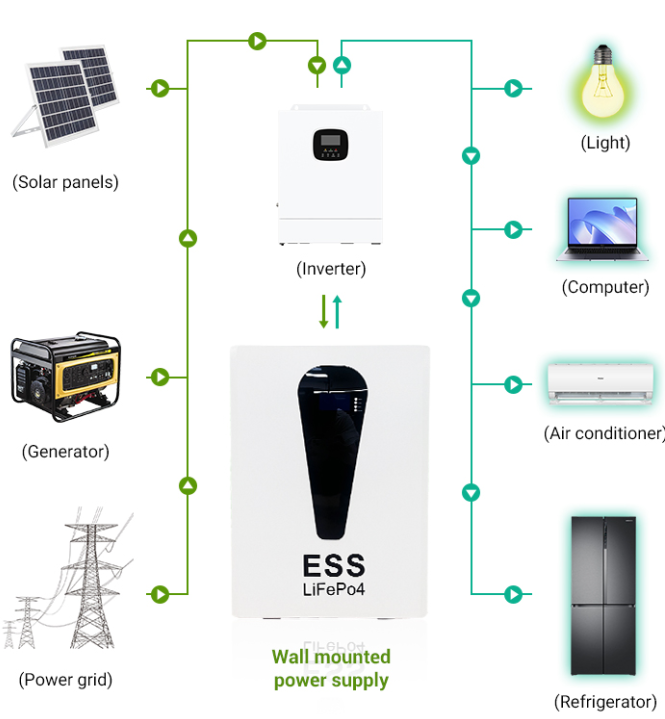Home energy storage systems (HESS) are designed to store energy for later use, typically from renewable energy sources like solar or wind power. Different types of home energy storage systems vary by technology, capacity, and application. Here are the main types:
1. Lithium-Ion Batteries
Technical Details:
- Chemical Principle: Lithium-ion batteries store and release energy through the movement of lithium ions between positive and negative electrodes.
- Energy Density: Approximately 150-250 Wh/kg.
- Charging Time: Typically a few hours to fully charge.
Applications:
- Commonly used in residential solar systems, backup power solutions, and smart grid applications.
Advantages:
- High Efficiency: Charging and discharging efficiency up to 90-95%.
- Long Lifespan: Typically 10-15 years.
- Compact: Smaller size, occupying less space.
Disadvantages:
- Higher Cost: More expensive compared to lead-acid batteries.
- Thermal Management: Requires effective cooling to prevent overheating.
Examples: Tesla Powerwall, LG Chem RESU.
2. Lead-Acid Batteries
Technical Details:
- Chemical Principle: Energy is stored and released through chemical reactions involving lead and lead oxide.
- Energy Density: Approximately 30-50 Wh/kg.
- Charging Time: Can take several hours to fully charge.
Applications:
- Typically used in backup power systems, off-grid setups, and low-cost solutions.
Advantages:
- Lower Cost: Initial investment is lower.
- Reliability: Mature technology with proven reliability.
Disadvantages:
- Lower Energy Density: Less energy storage capacity compared to lithium-ion batteries.
- Shorter Lifespan: Generally 5-7 years.
- Heavier: Bulkier and heavier than other types.
Examples: Flooded Lead-Acid (FLA), Sealed Lead-Acid (SLA) batteries.
3. Saltwater Batteries
Technical Details:
- Chemical Principle: Uses saltwater as the electrolyte for energy storage.
- Energy Density: Lower, generally less than lithium-ion batteries.
- Charging Time: Similar to lithium-ion batteries, but typically less efficient.
Applications:
- Suitable for environmentally conscious and sustainable energy solutions.
Advantages:
- Eco-Friendly: Non-toxic and environmentally friendly materials.
- Abundant Materials: Materials are widely available and cost-effective.
Disadvantages:
- Lower Energy Density: Overall energy storage is less.
- New Technology: Relatively new, with market applications still developing.
Examples: Aquion Energy (now defunct, but technology is still used).
4. Flow Batteries
Technical Details:
- Chemical Principle: Uses liquid electrolytes stored in external tanks to store energy.
- Energy Density: Lower, but capacity can be scaled.
- Charging Time: Flexible, depends on system design.
Applications:
- Suitable for large-scale storage and long-term energy storage needs.
Advantages:
- Long Lifespan: Up to 20 years.
- Scalability: Capacity can be increased by enlarging the electrolyte tanks.
- Sustainability: Suitable for long-term storage.
Disadvantages:
- Bulkiness: Requires large space for installation.
- High Cost: Higher equipment and maintenance costs.
Examples: Vanadium Redox Flow Batteries (VRFB).
5. Thermal Energy Storage
Technical Details:
- Storage Method: Stores energy in the form of heat or cold, typically used for heating or cooling.
- Energy Density: Not suitable for electrical energy storage, but effective for thermal energy.
- Charging Time: Depends on the thermal storage medium and temperature changes.
Applications:
- Used in heating and cooling systems for buildings.
Advantages:
- Efficiency: Highly efficient for thermal energy storage and regulation.
- Abundant Materials: Uses materials like water or phase-change materials (PCMs) that are widely available.
Disadvantages:
- Limited Use: Primarily for thermal energy; not directly applicable for powering electrical devices.
- Complexity: System design may be complex.
Examples: Molten salt systems, ice-based systems.
6. Hydrogen Storage
Technical Details:
- Chemical Principle: Uses electricity to create hydrogen through electrolysis, stores the hydrogen, and converts it back into electricity using a fuel cell.
- Energy Density: High, but requires high-pressure storage.
- Charging Time: Complex production and storage process, longer charging time.
Applications:
- Suitable for high-energy-density needs and future renewable energy solutions.
Advantages:
- High Energy Potential: Hydrogen has a high energy density.
- Clean Technology: Hydrogen as a clean energy source produces no pollutants.
Disadvantages:
- High Cost: Expensive hydrogen production and storage.
- Underdeveloped Infrastructure: Hydrogen infrastructure is still developing.
7. Supercapacitors
Technical Details:
- Chemical Principle: Stores energy through static electric fields rather than chemical reactions.
- Energy Density: Low, generally lower than lithium-ion batteries.
- Charging Time: Extremely fast, can be charged in seconds.
Applications:
- Suitable for applications requiring rapid charge and discharge, such as electric vehicle start-ups and burst power supplies.
Advantages:
- Fast Charging: Charging time is very short.
- Long Lifespan: Can handle millions of charge-discharge cycles.
Disadvantages:
- Low Energy Density: Not practical for long-term energy storage.
- Higher Cost: Higher unit energy cost.
Each of these energy storage systems has its own applications, advantages, and limitations depending on the home's energy needs, renewable energy production, and budget.
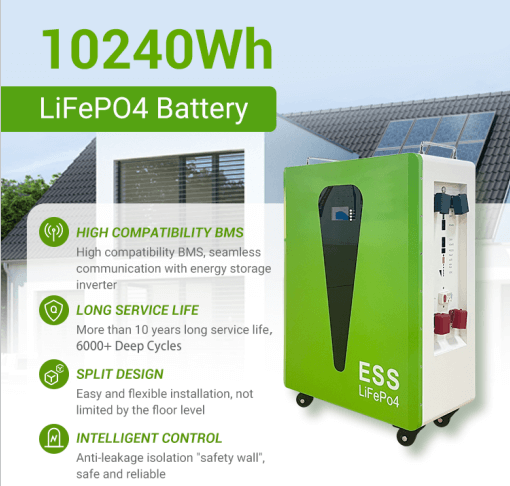
Lithium Iron Phosphate (LiFePO4) batteries have become increasingly popular in recent years due to their specific advantages, especially in home energy storage systems. Here’s a detailed look at LiFePO4 batteries:
Lithium Iron Phosphate (LiFePO4) Batteries
Technical Details:
- Chemical Principle: LiFePO4 batteries use iron phosphate as the cathode material and lithium as the anode material. The energy storage and release process involves the movement of lithium ions between the electrodes.
- Energy Density: Generally lower than some other lithium-ion chemistries but still sufficient for most applications (around 90-120 Wh/kg).
- Charging Time: Comparable to other lithium-ion batteries, typically a few hours to fully charge.
Applications:
- Home Energy Storage: Widely used in residential solar energy storage systems.
- Electric Vehicles: Common in some electric vehicles (EVs) due to safety and longevity benefits.
- Backup Power Systems: Used in uninterruptible power supplies (UPS) and other backup power applications.
Advantages:
- Safety: LiFePO4 batteries are known for their thermal stability and resistance to overheating, making them safer than other lithium-ion types. They are less prone to thermal runaway.
- Long Lifespan: Typically 2000-5000 charge-discharge cycles, depending on usage and management, leading to a long operational life (up to 10-15 years).
- Thermal Stability: Operate effectively in a wide temperature range, and are less likely to catch fire or explode compared to other lithium-ion chemistries.
- Environmentally Friendly: The materials used are less toxic and more environmentally friendly compared to other lithium-ion batteries.
Disadvantages:
- Energy Density: Lower than some other lithium-ion batteries like LiCoO2 or LiMn2O4, which means they may require more space for the same amount of stored energy.
- Cost: While generally more affordable than some high-energy-density lithium-ion options, they can still be more expensive than traditional lead-acid batteries.
Examples:
- Home Energy Storage: Tesla Powerwall, BYD B-Box.
- Electric Vehicles: Some electric cars use LiFePO4 batteries, such as certain models from BYD and other manufacturers.
LiFePO4 batteries offer a balanced combination of safety, lifespan, and performance, making them a popular choice for many energy storage applications today.
Discover Unmatched Energy Storage with Our LiFePO4 Home Energy Storage Battery
As a leading manufacturer of cutting-edge energy solutions, we proudly present our LiFePO4 Home Energy Storage Battery. Engineered with advanced Lithium Iron Phosphate (LiFePO4) technology, our battery offers unparalleled safety, longevity, and performance for your home energy needs.
Key Features:
- Exceptional Safety: With its stable chemistry, LiFePO4 ensures reliable and safe operation, reducing the risk of thermal runaway and ensuring peace of mind.
- Extended Lifespan: Enjoy up to 15 years of dependable service life, thanks to LiFePO4’s superior cycle stability and low degradation over time.
- High Efficiency: Our battery provides efficient energy storage and discharge, helping you maximize the benefits of your renewable energy sources.
- Eco-Friendly: Contributing to a greener future, our batteries are designed to be environmentally friendly, minimizing impact while maximizing efficiency.
Why Choose Us?
- Factory Direct: As a factory-direct supplier, we offer competitive pricing and direct access to our high-quality products.
- Custom Solutions: We provide tailored solutions to meet your specific energy storage needs, ensuring optimal performance and integration.
- Reliability: Our commitment to quality and customer satisfaction ensures that you receive a product that meets the highest standards of excellence.
Empower your home with the latest in energy storage technology. Choose our LiFePO4 Home Energy Storage Battery for a safer, longer-lasting, and more efficient energy solution. Contact us today to learn more!
